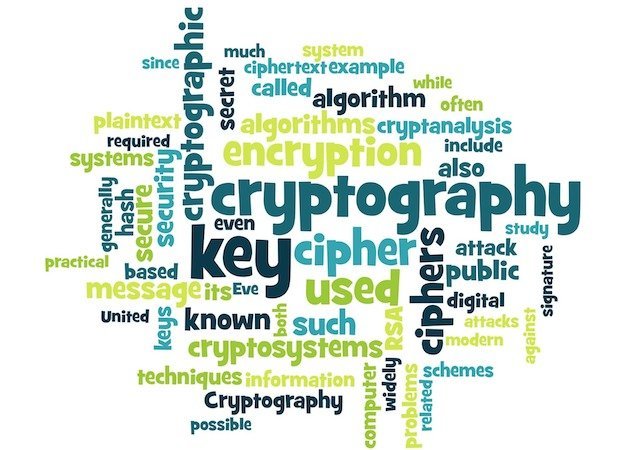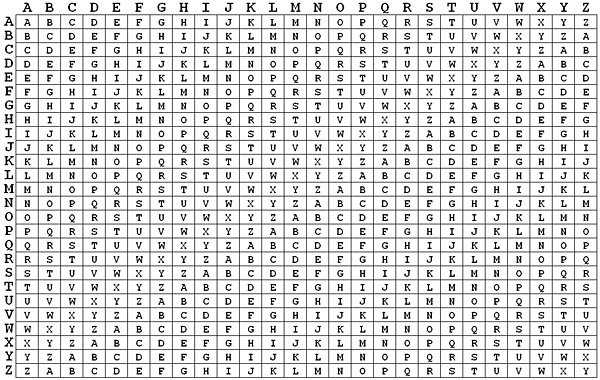Entendendo a criptografia / Understanding cryptography [Part 7]
English version below
PT
Esta é a parte 7 da série de criptografia. Se você não viu as partes anteriores veja abaixo:
Cifra de Vigenére
A Cifra de Vigenére é uma cifra polialfabética. Na Cifra de César falamos sobre cifras monoalfabéticas, ou seja, constituídas da substituição de apenas um alfabeto na criação do texto cifrado, agora nesta cifra temos o exemplo de uma polialfabética, que logicamente é o oposto da monoalfabética. Nesta cifra, diversos alfabetos são usados na cifragem do texto claro, sendo assim, cada letra do texto é substituída por um alfabeto independente.

Source
Como você pode imaginar, o uso de diversos alfabetos aumenta a segurança do algoritmo e consequentemente dificulta para o criptoanalista.
Basicamente se você ainda não pegou o espírito da coisa a Cifra de Vigenére consiste em 26 Cifras de César, veremos um exemplo daqui a pouco.
Para facilitar a cifragem e decifragem temos uma tabela, que nada mais que as 26 possibilidades da Cifra de César, uma abaixo da outra.

Source
Para que isso funcione é preciso que tenhamos previamente definido e avisado as partes que devem ler a mensagem uma palavra-chave, que vai fazer a cifragem e decifragem.
A cifragem ocorre quando fazemos a intersecção de uma letra da palavra-chave com o texto claro, e para que isso funcione perfeitamente nos dois sentidos a palavra-chave deve ter o mesmo tamanho do texto claro. Caso sua palavra-chave seja menor que o texto claro pode-se repetir a palavra-chave quantas vezes for necessário para preencher todo o espaço.
Agora sabendo tudo isso vamos ao exemplo:
Primeiramente vamos precisar de um texto claro, para esse exemplo vou usar "Vamos atacar amanha a tarde".
Segundamente vamos precisar de uma palavra-chave, neste caso vou usar "segredo".
Agora de posse das duas informações necessárias para a cifragem vamos a tabela comparar e substituir como a Cifra de César.

Source
Podemos ver que fazendo essa substituição nosso texto claro se transforma em NESFWDHSGGIEPOFLGRXDFVI.
No próximo post da série veremos mais 2 exemplos de cifras clássicas e depois já vamos ver algo mais atual e utilizado hoje em dia. :)

ENG
This is the seventh part of the cryptography series. If you didn't read the previous posts see below:
Vigenére Cipher
The Vigenére Cipher is a polyalphabetical cipher. In the Caesar Cipher we speak of monoalphabetic cipher, that is, constituted of the substitution of only one alphabet in the creation of the ciphertext, now in this cipher we have the example of a polyalphabetical, that logically is the opposite of monoalphabetic. In this cipher, several alphabets are used in clear text encryption, so, each letter of the text is replaced by an independent alphabet.

Source
As you can imagine, the use of several alphabets increases the security of the algorithm and therefore makes it difficult for the cryptanalyst.
Basically if you still have not caught the spirit of the thing the Cipher of Vigenére consists of 26 Caesar Chiphers, we will see an example in a little while.
To facilitate encryption and decryption we have a table, which is nothing more than the 26 possibilities of the Cipher of Caesar, one below the other.

Source
For this to work we need to have previously defined and warned the parties that they should read the message a keyword, which will do the encryption and decryption.
Encryption occurs when we intersect a keyword with clear text, and for this to work perfectly both ways the keyword must be the same size as the plain text. If your keyword is smaller than clear text you can repeat the keyword as often as necessary to fill the entire space.
Now knowing all this let's go to the example:
First we will need a clear text, for this example I will use "Vamos atacar amanha a tarde".
(Yeah it's portuguese)
Secondly we will need a keyword, in this case I will use "segredo".
Now in possession of the two necessary information for encryption let's compare table and replace as the Cipher of Caesar.

Source
We can see that by doing this replacement our clear text becomes NESFWDHSGGIEPOFLGRXDFVI.
In the next post of the series we will see two more examples of classic figures and then we will see something more current and used nowadays. :)







Congratulations @deividluchi! You have completed the following achievement on Steemit and have been rewarded with new badge(s) :
Click on the badge to view your Board of Honor.
If you no longer want to receive notifications, reply to this comment with the word
STOPTo support your work, I also upvoted your post!
excelente série, acho muito genial essa coisa de criptografia e o massa é que é uma coisa bem antiga né, até anterior ao computador em si.
ptgram power | faça parte | grupo steemit brasil
Sem dúvida!
Existe praticamente desde o início da escrita e da matemática. Hoje em dia tudo gira em torno da criptografia e pouco se sabe sobre o assunto em si, por esse motivo tenho postado um pouco toda semana :)
Obrigado pelo comentário!